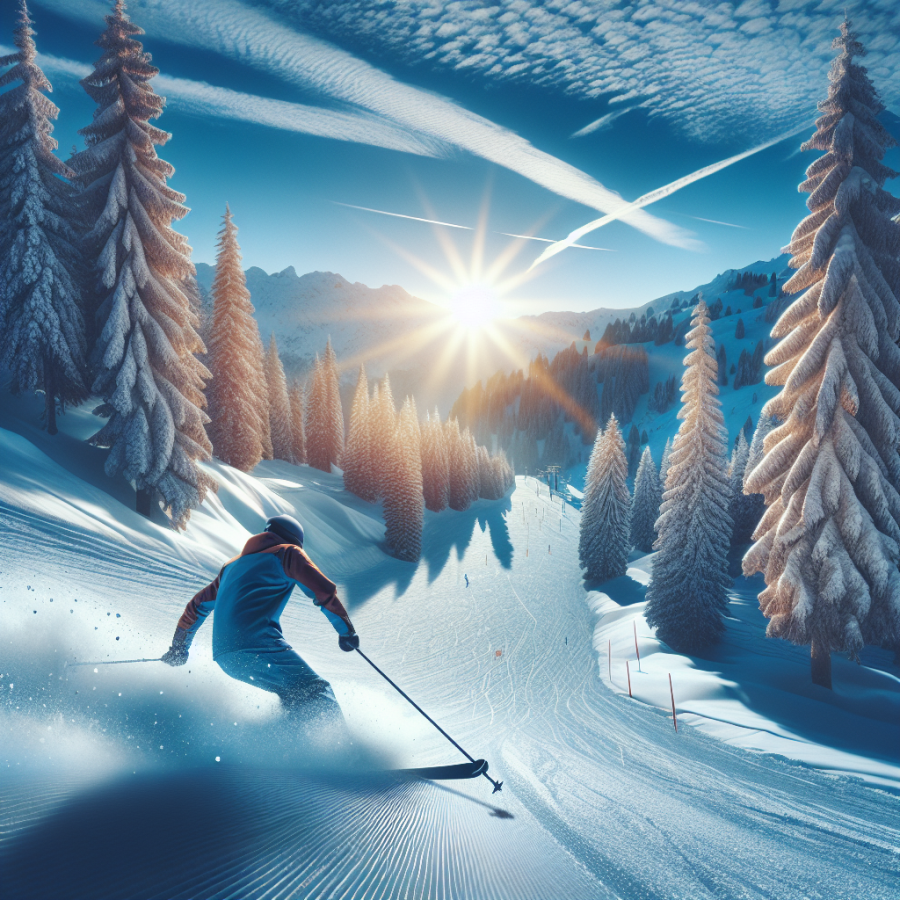Taking It to the Next Level: Advanced Skiing Skills for Experienced Enthusiasts
Taking It to the Next Level: Advanced Skiing Skills for Experienced Enthusiasts
As seasoned skiers look to push their boundaries and enhance their abilities on the slopes, mastering advanced skiing skills is paramount. This section dives into the techniques, strategies, and mental approaches necessary for experienced enthusiasts to take their skiing to the next level.
**Carving Like a Pro**: Advanced skiers must refine their carving technique, which is the execution of clean, sharp turns with minimal skidding. This requires precise edge control and a solid understanding of ski mechanics. Skiers should practice rolling their knees into the turn to increase edge angle, while maintaining a strong core to ensure stability.
**Mogul Mastery**: Navigating moguls is a challenge that demands quick reflexes, balance, and an ability to absorb the terrain. This involves keeping the upper body quiet and facing downhill, using pole plants for timing, and making short, quick turns. Advanced skiers should focus on absorbing the bumps with their legs and maintaining a rhythmic flow through the mogul field.
**Powder Prowess**: Skiing in powder presents an entirely different set of challenges. To excel in deep snow, skiers should adopt a wider stance for increased stability and use more even weight distribution between skis. The key is to make smooth, rounded turns and maintain momentum to avoid getting bogged down.
**Steep Strategies**: Skiing on steep slopes requires confidence and expertise. Skiers must keep their weight forward, use pole plants for stability, and execute precise, confident turns. It's also important to manage speed through turn shape, making larger, more deliberate turns or using a hop turn technique when necessary.
**Technical Terrain Tactics**: When skiing in technical terrain that includes narrow chutes, trees, or rocky areas, advanced skiers must anticipate obstacles and remain agile. Short, quick turns, and a keen spatial awareness are crucial. It's also important to maintain a strong, forward stance and to spot and commit to the line of descent early on.
**Alpine Awareness**: Developing an awareness of the alpine environment is critical for advanced skiers. This entails understanding snow conditions, weather patterns, and terrain variables. Being able to adapt technique accordingly and make informed decisions on the mountain is a sign of a seasoned skier.
**Mental Focus and Discipline**: The mental aspect of skiing cannot be overstated. Advanced skiers must hone their focus, manage fear, and remain disciplined.
Read also:
The Evolution of Shooto: From Japan to Global Phenomenon
Mastering the Basics: Skiing Fundamentals for Beginners
Mastering the basics of skiing is crucial for beginners who are eager to conquer the slopes and enjoy the exhilarating experience of gliding through the snow. To ensure a smooth and safe start to your skiing journey, it’s important to focus on fundamental techniques that will serve as the foundation for your progression to more advanced skills.
Before even hitting the slopes, familiarize yourself with the essential equipment. Knowing how your skis, boots, bindings, and poles function will make you feel more comfortable and in control. Make sure your boots fit properly to avoid any discomfort or injuries, and learn how to correctly step into your bindings. You can practice this at home or on a flat area at the base of the ski resort.
Once you’re geared up, it’s time to focus on your stance. The basic skiing posture requires you to slightly bend your knees and lean forward from your ankles. Your weight should be balanced over the center of your skis, with your arms forward and hands in front of you, holding the poles. This stance helps you stay balanced and prepared to absorb any bumps or changes in terrain.
Balance and control are crucial when you start moving. Learn the foundational "pizza" or wedge technique which is a simple way of slowing down and controlling your descent. To perform this technique, point the tips of your skis towards each other, forming a triangle or ‘pizza slice’ shape. This allows you to manage your speed and provides a basic method for stopping.
Turning is the next critical skill for maneuvering down the slopes. Beginners should start with the basic snowplow turn, which is an extension of the pizza technique. As you move forward with your skis in a wedge shape, shift your weight slightly to the ski on the side you wish to turn. This will help initiate the turn, allowing you to change direction while maintaining control.
Once comfortable with turning and stopping, practice linking turns together. The goal is to create smooth and controlled 'S' shapes as you descend, managing your momentum and rhythm through the shifting of your weight from one ski to the other.
An often overlooked fundamental is learning how to fall safely. Despite your best efforts, falls are a normal part of learning to ski. When you feel you’re losing balance, try to go with the fall rather than fighting it, keeping your limbs relaxed. Knowing how to fall correctly can help prevent injuries and make it easier to get back up and continue skiing.




